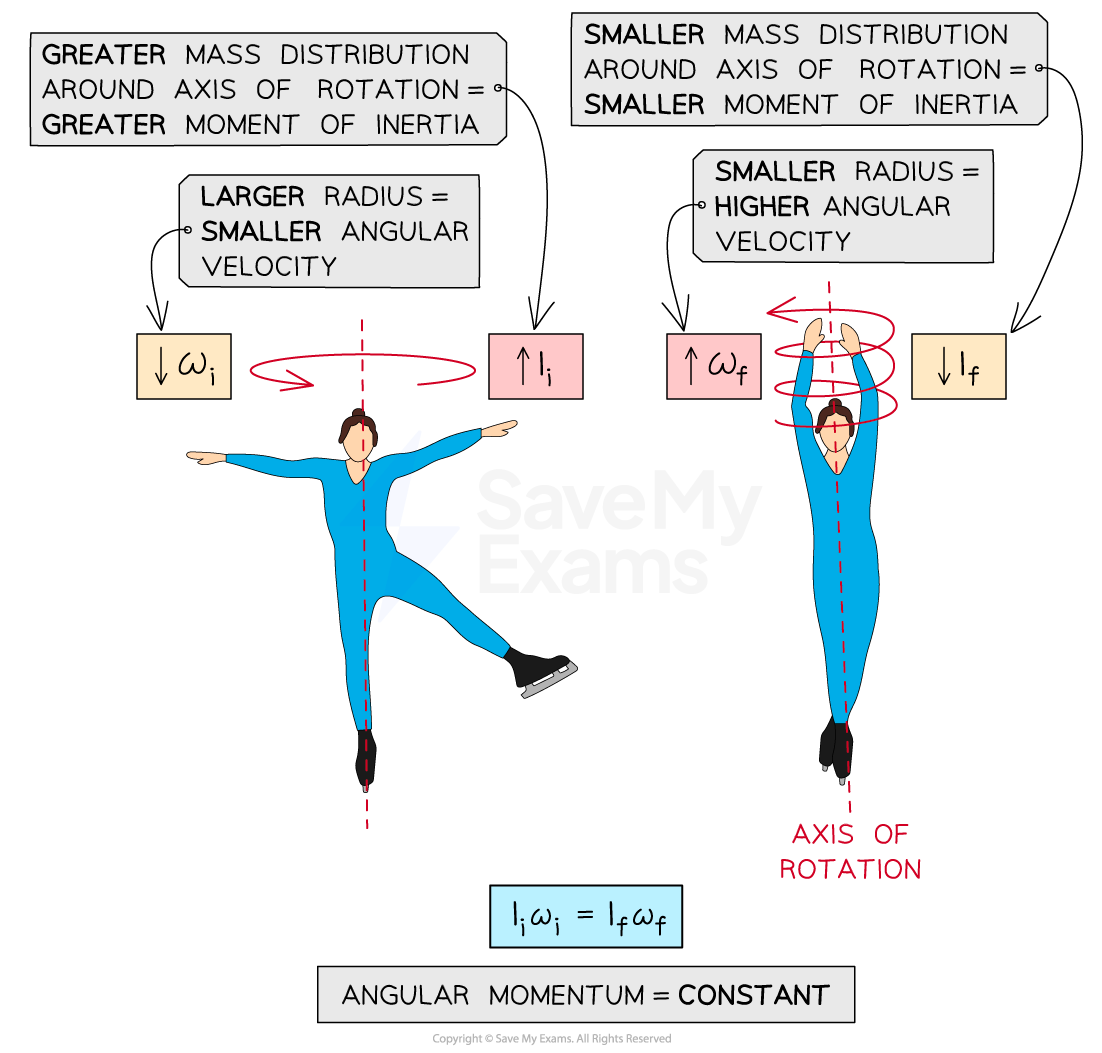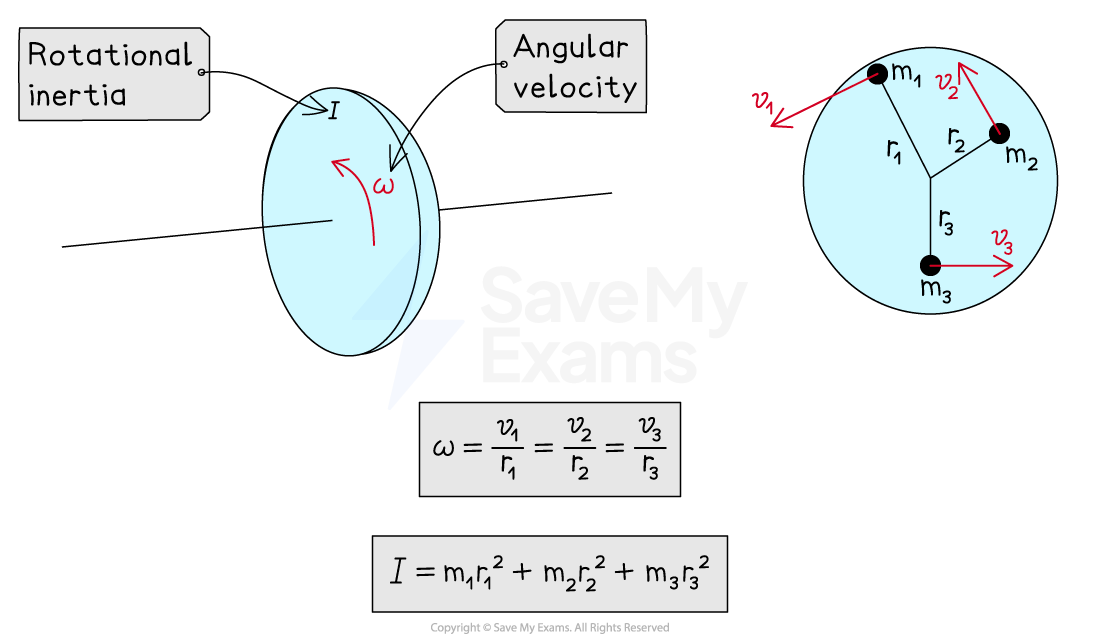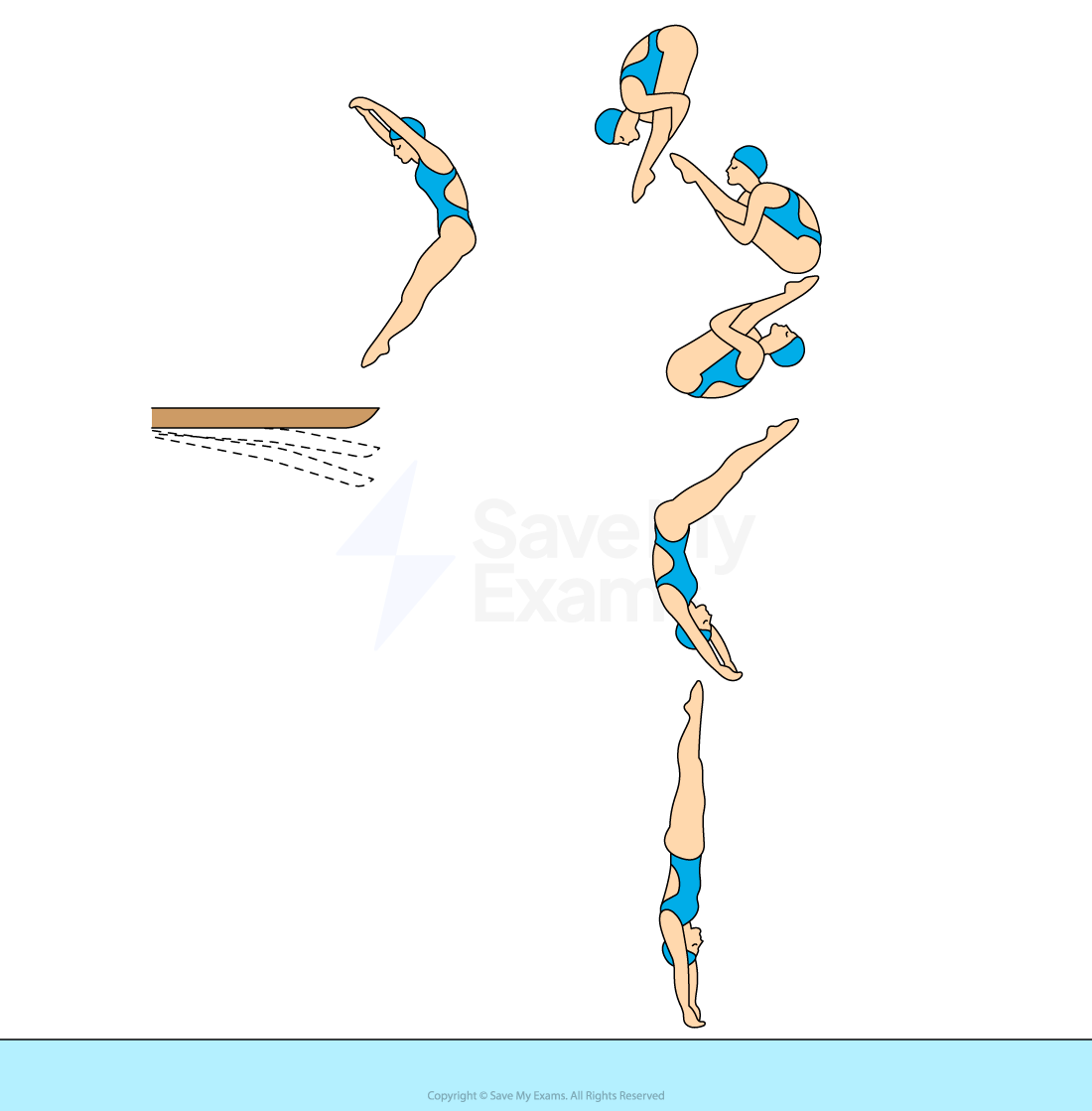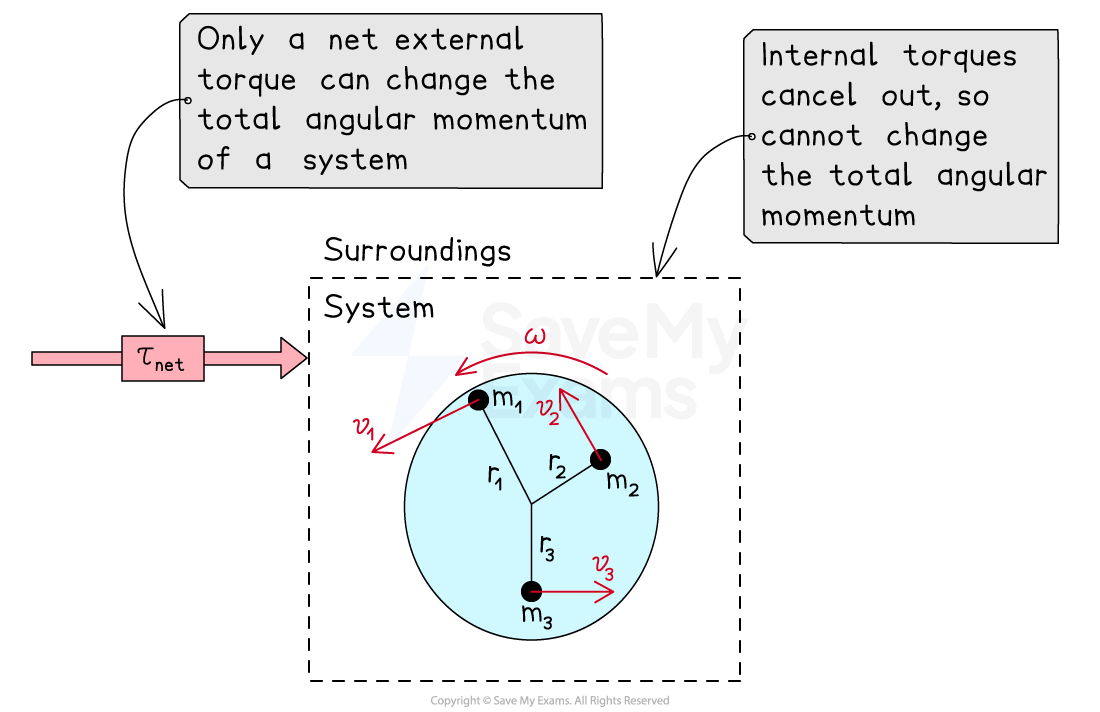Angular Momentum of a System (College Board AP® Physics 1: Algebra-Based): Study Guide
Angular speed of a nonrigid system
As a result of the principle of conservation of angular momentum, when a nonrigid system changes shape, it may increase or decrease its angular speed
There are several real-world examples of this, such as:
a person on a spinning chair spins faster when their arms and legs are contracted and slower when extended
ice skaters can change their rotational velocity by extending or contracting their arms
tornados spin faster as their radius decreases
When a nonrigid system changes its shape, the distribution of mass about its rotational axis may also change
This results in a change to its rotational inertia
Angular momentum is the product of rotational inertia and angular speed
Therefore, if rotational inertia changes, angular speed must change to conserve angular momentum
A nonrigid system may change its shape by
moving mass closer to the rotational axis, thereby decreasing the rotational inertia of the system
moving mass further from the rotational axis, thereby increasing the rotational inertia of the system
Conservation of angular momentum in a nonrigid system

In a nonrigid system where no external torque acts, the angular momentum of the system remains constant
Due to the conservation of angular momentum, the angular speed of a nonrigid system will:
increase to compensate for a change in shape which decreases the rotational inertia of the system
decrease to compensate for a change in shape which increases the rotational inertia of the system
Therefore, for a constant angular momentum, the following equation can be used:
Where:
= initial rotational inertia, in
= initial angular velocity, in
= final rotational inertia, in
= final angular velocity, in
Total angular momentum of a system
Total angular momentum
The total angular momentum of a system about a rotational axis is the sum of the angular momenta of the system’s constituent parts about that axis

Total angular speed
Each particle has a different linear velocity
depending on its distance
from the rotational axis
Note: assuming the
and
vectors are perpendicular to each other
The overall system can therefore be described by an angular velocity equal to:
Total rotational inertia
Each particle of mass
contributes to the overall mass distribution of the system depending on its distance
from the rotational axis
The overall system can therefore be described by a rotational inertia equal to:
Deriving the equation for angular momentum
Therefore, a collection of objects with individual angular momenta can be described as one system with an associated angular velocity and rotational inertia about a specified axis
We can then simplify the expression to give us the expression for the total angular momentum of the system:
Where:
= total angular momentum of the system, in
= total rotational inertia of the system, in
= angular velocity about the rotational axis of the system, in
Worked Example
The diagram shows the different positions of a diver between jumping off a springboard and entering the water.

During their fall, the diver pulls their arms and legs into a tight tuck position while in the air and straightens them before entering the water.
Which of the following correctly describes the changes to the diver's rotational inertia and angular velocity as they bring their limbs closer to their body?
A The rotational inertia and angular velocity both increase
B The rotational inertia decreases while the angular velocity increases
C The rotational inertia increases while the angular velocity decreases
D The rotational inertia and angular velocity both decrease
The correct answer is B
Answer:
Step 1: Analyze the scenario
After the diver leaves the springboard, there is no longer a resultant torque acting on them
This means their angular momentum remains constant throughout the dive
Step 2: Eliminate the incorrect options
The conservation of angular momentum states:
When the diver tucks their arms and legs in closer to their body, they decrease their rotational inertia
This eliminates options A & C
Step 3: Deduce the correct option
To conserve angular momentum, when the diver's rotational inertia decreases, their angular velocity must increase
Therefore, the correct option is B
Conditions for the transfer of angular momentum
A system may be selected so that the total angular momentum of that system is constant
The system can be defined as the objects or rigid system involved in the interaction
The surroundings can then be defined as anything outside of the chosen system
The total angular momentum of a system can be changed only by a net external torque
When the net external torque on an object or rigid system is nonzero:
any change to a system's angular momentum must be due to a transfer of angular momentum between the system and its surroundings
the conservation of angular momentum principle is not valid
When the net external torque on an object or rigid system is zero (i.e. in an isolated system):
the total angular momentum of the system is constant
any change to the angular momentum within the system must be balanced by an equal and opposite change of angular momentum elsewhere within the system
the conservation of angular momentum principle is valid
Transfer of angular momentum by a net external torque


Unlock more, it's free!
Did this page help you?